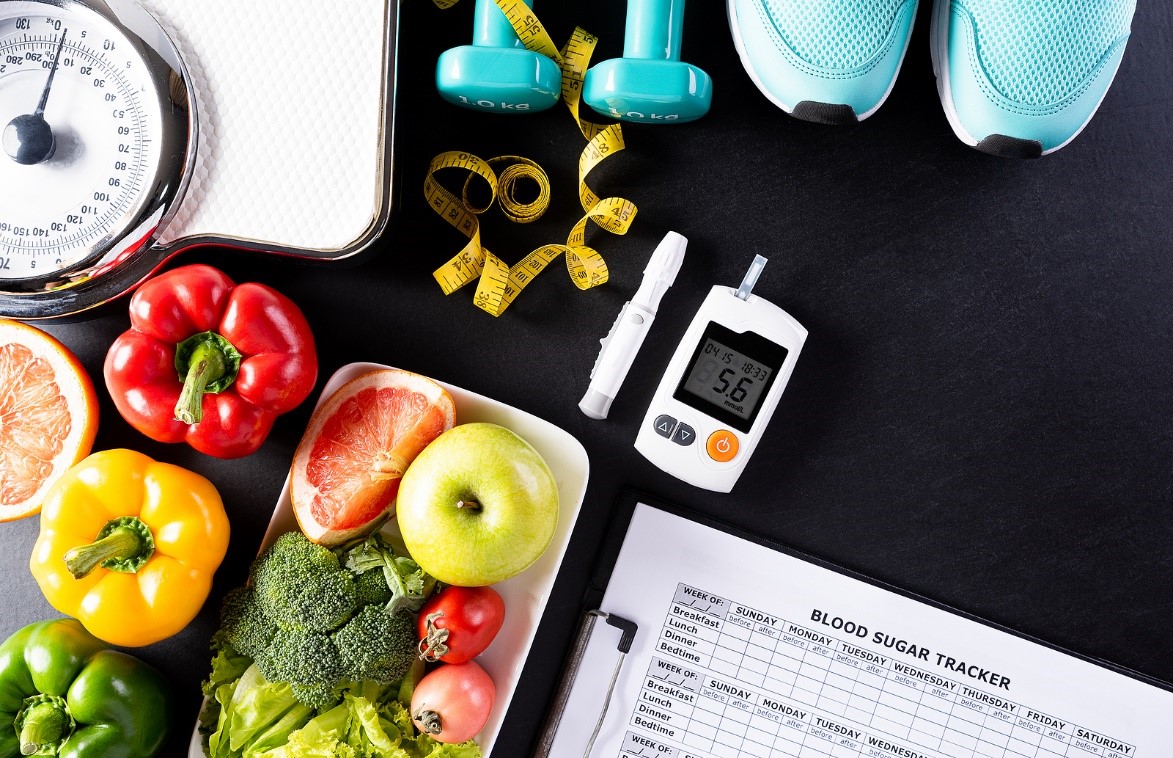
According to the American Diabetes Organization, approximately 34 million children and adults have diabetes in the United States. Diabetes is growing at an epidemic rate, and this alarming growth is being seen across the nation.
November is National Diabetes Month, and it’s an opportunity to raise awareness of the illness. There is no cure for diabetes yet, and it’s crucial to make people aware of the symptoms to take the proper steps to reverse or manage diabetes.
What is Diabetes?
Diabetes is a chronic health condition that impacts how the body turns food into energy. The food we eat is broken down into sugar, also called glucose, and released into the bloodstream. When the glucose level increases, the pancreas gets a signal to release insulin. Insulin acts like a key to let blood sugar into the body’s cells for use as energy. (CDC, 2020)
In people who have diabetes, either their body doesn’t make enough insulin or cannot use the insulin as well as it should. When too much blood sugar remains in the bloodstream, it could lead to serious health issues like kidney disease, heart disease, vision loss, etc.
Types of Diabetes
The three major types of diabetes are type 1 diabetes, type 2 diabetes, and gestational diabetes.
Type 1 diabetes is a chronic condition in which the body produces little or no insulin. Type 1 diabetes can occur at any age and in people of every size or shape.
Type 2 diabetes occurs when the body doesn’t use insulin properly. The body becomes resistant to insulin, due to which there is a sugar buildup in the body.
Gestational diabetes occurs during pregnancy when the hormones produced by the placenta cause a problem called insulin resistance, which makes it hard for the mother’s body to use the insulin.
There is another condition called prediabetes in which the blood sugar is higher than normal. Still, it is not high enough to be diagnosed as type 2 diabetes.
What Causes Type 2 Diabetes?
Type 2 diabetes is the most common type of diabetes. According to the Centers for Disease Control and Prevention (CDC), approximately 90-95% of Americans have type 2 diabetes. While type 2 diabetes usually develops in people over age 45, there has been an increase in the number of children, teens, and young adults developing it.
Causes
Type 2 diabetes is a result of the following two interrelated problems. One is when the pancreas is not able to produce enough insulin to manage blood sugar levels. The other reason is when the cells in the liver, muscle, and fat become resistant to insulin and cannot take in enough sugar. The key factors that contribute to the onset of type 2 diabetes are being inactive and overweight.
Symptoms
Sometimes people may be living with type 2 diabetes for years without knowing it. The symptoms may develop slowly, and they may include,
- Frequent urination
- Increased hunger and thirst
- Fatigue
- Weight loss
- Tingling or numbness in the hands and feet
- Blurred vision
- Slow-healing sores
Risk Factors
Some factors that increase the risk of type 2 diabetes are:
- Being overweight
- Insulin resistance
- Inadequate physical activity
- Family history
- Old age
- Ethnic background
(Taylor, 2020)
Type 2 diabetes affects the body’s major organs like the heart, kidneys, blood vessels, eyes, nerves, etc. Some of the potential complications of diabetes include,
- Heart and blood vessel diseases such as stroke and high blood pressure.
- Kidney disease may lead to chronic kidney disease requiring dialysis or a kidney transplant.
- Damage to the nerves, which results in tingling, numbing, or even eventual loss of feeling.
- Damage to the eyes increases the risk of eye diseases such as cataracts, glaucoma, and even blindness
- Hearing impairment
- Skin problems such as being susceptible to fungal or bacterial infections. Healing from cuts and blisters is also slow. Sometimes serious infections could lead to amputation of the toe, foot, or leg.
(Mayo Clinic, 2021)
Prevention
The best way to prevent diabetes is to make healthy lifestyle choices.
Regular exercise is important in preventing diabetes. Indulge in aerobic activity like walking, cycling, swimming for 150 mins or more each week. Avoid inactivity and sitting for too long. After every 30 minutes of sitting down, get up and stretch or move for a few minutes.
What you eat has a direct affect on becoming type 2 diabetic. Avoid high-calorie foods. Instead, eat fruits, vegetables, and nuts that are rich in fiber.
Whether you’ve had diabetes for a long time or are newly diagnosed, you can take control of your life with the right food and lifestyle choices. Sometimes it might be challenging to understand if you have diabetes as you may not have any apparent symptoms. It’s always better to check with your doctor and get tested early. Diabetes is a condition that can be managed with proper planning and preparation between you and your doctor.
Works Cited
CDC. “What Is Diabetes?” Centers for Disease Control and Prevention, Centers for Disease Control and Prevention, 11 June 2020, www.cdc.gov/diabetes/basics/diabetes.html.
Taylor, Rebecca Buffum. “Diabetes Risk Factors: Genetics, Obesity, and More.” WebMD, WebMD, 2020, www.webmd.com/diabetes/guide/risk-factors-for-diabetes.
Mayo Clinic. “Type 2 Diabetes.” Mayo Clinic, Mayo Foundation for Medical Education and Research, 20 Jan. 2021, www.mayoclinic.org/diseases-conditions/type-2-diabetes/symptoms-causes/syc-20351193.
